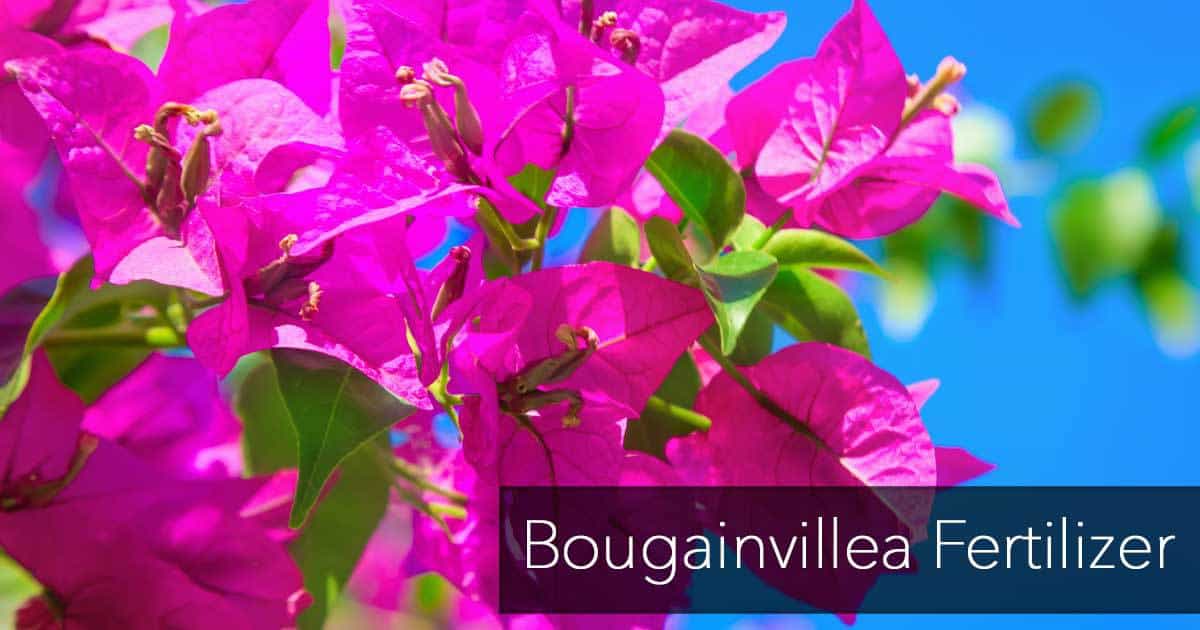The beautiful Bougainvillea plant is a genus of tropical plants, thorny, shrub-like perennial vines of the Nyctaginaceae family.
Beautiful in a hanging basket, some growers have formed them as bonsai.

The plants are native to South America and are available at many garden centers in spring. There are more than 300 Bougainvillea varieties and a wide range of colors, such as:
- White
- Yellow
- Lavender
- Orange
- Purple
- Red
- Shades of pink
But, there’s an interesting and lesser-known fact about bougainvillea plants – what are often considered flowers are modified leaves called bracts.
Since the colorful bracts are immensely showy and encircle the tiny, white-colored real flowers, almost hiding them, they are often mistaken for flowers.
The plants have two distinctive growth cycles: a period of vegetative green growth and a growing season or blooming period.

Bougainvillea in South Florida does not bloom as heavily during the summer months (June – August) because of the long days and excessive rainfall.
Although, they grow beautifully somewhere like Texas, where it’s mostly hot and dry.
Bougainvilleas are heavy feeders and need bougainvillea plant food regularly throughout the blooming season to ensure the proper production of flowers.
Related: Tips on Helping Your Bougainvillea Flower
They grow best in warm weather and must be protected from frost and cold weather.
The plants are known by different names in different parts of the world.
Some alternative names for bougainvillea are:
- Buganvilla (Spain)
- Pokok bunga kertas (Indonesia and Malaysia)
- Bugambilia (Mexico, Cuba, Guatemala, and the Philippines)
- Jahanamiya (Arab World)
- Primavera (Brazil)
What is the Best Fertilizer For Bougainvillea?
A growing bougainvillea plant needs phosphate and nitrogen plant food to flower, so use a bougainvillea food containing these elements to ensure proper blooming.
A small amount of iron (chelated) can help your bougainvillea plants maintain their beautiful and vibrant colors.
Do not use a generalized fertilizer for bougainvillea species; use a labeled bougainvillea fertilizer.

To ensure abundant flowering plants and good overall health of plants, use a balanced, slow-release fertilizer containing nitrogen, phosphorus, and potassium (N-P-K) in equal ratios, such as 5-5-5 or 10-10-10, and don’t forget this when repotting.
Nitrogen gives the plants their green color and supports healthy plant growth. Too much nitrogen can produce lots of growth but little in the way of flowers.
If repotting, ensure you dig up the root ball as much as possible before moving.
Using a slow-release fertilizer on this houseplant is critical because the excessive nitrogen supply inhibits blooming and promotes new growth to be vegetative.
How about the best fertilizer for bougainvillea in pots?
The best fertilizer for bougainvillea in pots is typically a balanced, slow-release fertilizer with a higher phosphorus content.
Phosphorus promotes blooming and enhances the vibrant colors of the bougainvillea flowers.
It’s important to choose a bougainvillea plant fertilizer specifically formulated for flowering plants and follow the application rates and frequency instructions.

Following specialty plant food fertilizers are known to work best for bougainvillea plants:
- NutriStar
- BOUGAIN (6-8-10)
- Dr. Earth Exotic Blend
Many plant experts and home gardeners also recommend using a hibiscus fertilizer if a fertilizer specially formulated for bougainvilleas is unavailable.
Adding about a tablespoon of Epsom salt during fertilization may also be beneficial. The magnesium and sulfur in this help the production of more flowers and aid in the formation of chlorophyll.
When or How to Fertilize Bougainvillea
Feed your bougainvillea with a nitrogen and phosphate fertilizer once a month during the bloomer period, i.e., from early spring to midsummer.
Don’t forget to provide valuable elements crucial for plant health, such as calcium, manganese, and iron.

You can also use a generic all-purpose fertilizer. These essential nutrients will help sustain the life cycles of microorganisms and other plants and help the plant’s organic structure.
For healthy bougainvillea vines growing in the ground, use half a cup of granular fertilizer per 4′ feet in height and lightly scratch it into the soil surface using a trowel or a hand cultivator.
Remember to fertilize only during its active growing season to prevent burning its foliage and roots.
Plant the water thoroughly after fertilizing. If potted, make sure there are good drainage holes.
Examples of bougainvillea fertilizers you can use are half-strength, liquid fertilizers, or water-soluble fertilizers for plants growing in containers.
Dissolve one tablespoon of bougainvillea fertilizer in a gallon of water and water the potting soil mix.
Ensure to avoid too much water as Bougainvillea blooms and grows best when the fertile soil is kept a little dry; too much watering will lead to root rot.

Bougainvillea care tip: Do not fertilize the species of this perennial flowering vine in fall and winter if you live in a cool area, and reduce watering to a minimum, too.
Related: More on Bougainvillea Watering and Watering Bougainvillea in Pots
If you live in the northern states, it’s too cold to grow bougainvillea in the fall unless they’re housed in warm greenhouses.
No Feeding Bougainvillea in Winter: Only resume feeding when the plant is returned to the outdoors, under full sun or direct sunlight, in the following spring.
Prune any suckers growing at the base of the plant or by pinching them off to encourage more healthy growth at the top. Watch out for sharp thorns when pruning!
This is because the plants are not winter-hardy and become semi-dormant in cold weather.
Once the plant becomes established, it’s drought-tolerant, and it tends to bloom year-round in a warm climate. They are recommended for USDA hardiness zones 10 – 11.
Fertilizing Bougainvillea
Apply a high-nitrogen fertilizer on young plants until they have grown well and become established.
Once they are well-established and have significant vegetative growth, switch to a high-potassium fertilizer to encourage blooming.

Important: Never feed your bougainvillea plants when their root system is dry. If the soil is too dry and it’s time for fertilization, water the plant and wait one day before feeding.
